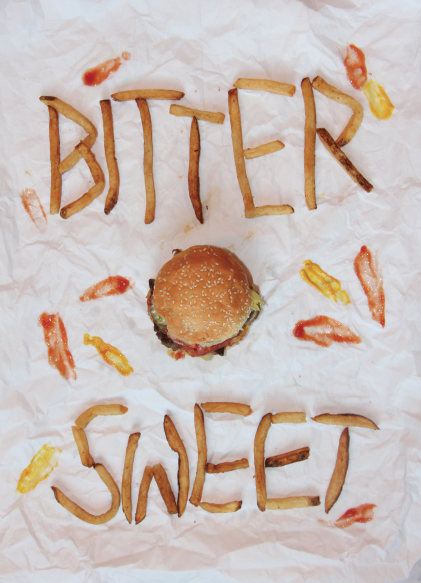Your donation will support the student journalists of Kirkwood High School. Your contribution will allow us to purchase equipment and cover our annual website hosting costs.
Bittersweet
October 16, 2015
Somewhere in America sugar is administered into assembly line products like insulin injections to a 9-year-old diabetic. Somewhere in America an overweight, diet conscious eighth grader walks her second mile of the day, wondering, ‘when will I be like the Victoria’s Secret models?’ Somewhere in America a politician blames people for their obesity, not the food industries.
“Americans need to eat less and exercise more” has been ingrained in our minds since the start of the obesity problem in the late 1970s. Yet, America remains the fattest country in the world with a total of 78.6 million obese adults, or 33 percent of the population, according to the Centers for Disease Control and Prevention (CDC).
How is it a lack of willpower, responsibility and motivation when the products themselves contain the contents that inherently make people obese?
This idea of practicing energy balance, matching the number of calories in to the number out, was thought to be the cure for years. However, in order to burn off a chicken sandwich from Chick-fil-A, a 150-pound person would need to walk for 100 miles. This proves that a calorie in is not in fact the same as a calorie out.
In 1977, when the McGovern Report was released, fat in products was at an all time high, thus the proposition was for people to eat food containing less fat. Companies then began the surge of “fat-free” and “reduced-fat” products. By taking away fat the products lost flavor, causing industries to replace fat with sugar. This kick-started the sugar revolution, ergo the root of America’s obesity problem.
The American Heart Association (AHA) recommends women consume 6 teaspoons of additional sugar a day and for men, 9 teaspoons. A 12-ounce can of Coca-Cola contains about 9 1/3 teaspoons of sugar, putting both genders over their daily value. Companies, despite the impacts of excessive daily sugar, are not required by law to provide the percentage of one’s daily sugar value. Without an established daily sugar percent, consumers don’t realize they may be consuming over 100 percent of their daily dosage of sugar, according to Craig Dickinson, health teacher.
Sugar, in the eyes of a manufacturer, comes in many different forms: high-fructose corn syrup, brown sugar, dextrose, honey, glucose and others. However, your body processes them all the same. The fructose in sugar can only be processed in the liver, and when it receives a high intake of sugar the pancreas steps in by creating insulin. Insulin is the energy storage hormone, thus it stores the sugar into fat.
With all these ‘other forms of sugar’ industries can avoid listing ‘sugar’ in the top three ingredients. For example, in “Wild Strawberry” Kellogg’s Pop-Tarts the second ingredient is corn syrup followed by high fructose corn syrup then sugar.
Aside from the skewed ingredients and sugar highs, companies also manipulate serving sizes. For example, a single, 8 fluid ounce bottle of Gatorade contains 2 1/2 serving sizes. These ballooned portions, like the banned super-sized McDonald’s meals, trick people into consuming more than double their proper quota. The portion size is not equal to an individual’s accurate supply, but instead one product may be proportionate to two or three serving sizes.
As waistbands pop, the bittersweet truth of the today’s food products is polarizing. People are at a loss for control, and big corporate industries are not helping the obesity epidemic. It’s time to take the sweet out, and douse the flames with truth. Enough with the obesity, lies and everything sweet.

